
20 celebrations this holiday season besides Christmas
Explore how other religions and cultures celebrate their holidays.
- Subject:
- Education
- Social Studies
- Material Type:
- Primary Source
- Date Added:
- 11/25/2021

20 celebrations this holiday season besides Christmas
Explore how other religions and cultures celebrate their holidays.
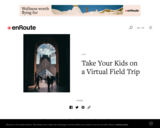
Curate your own exhibition at the Art Gallery of Ontario; swim with African penguins at the San Diego Zoo; travel back in time at the Louvre; visit the Canadian Museum of History; blast into outer space with NASA. This site offers all of these opportunities for your student to experience.
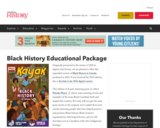
This edition of Kayak opens in new window, shares some amazing stories and examples of the ways Black Canadians built and shaped this country. You get great stories , as well as articles featuring people who have helped preserve and promote Black history, Black women’s organizations with long histories, and Canadians with Afro-Indigenous heritage.
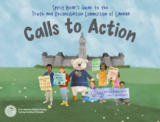
In 2008, a group called the Truth and Reconciliation Commission (TRC) was made. Their job was to listen
to stories about residential schools and then write the stories down so we can learn from our mistakes.
In 2015, the Truth and Reconciliation Commission announced their 94 Calls to Action. These are 94
activities all governments, courts, businesses, schools, and people living in Canada can do to help fix the
mistakes of the past and present so that all children – including First Nations, Métis, and Inuit children –
can grow up happy, healthy, safe, and proud of who they are.
This booklet is written by Spirit Bear as a youth-guide to the TRC’s 94 Calls to Action. Each of the calls is outlined in student-friendly language that will give them a deeper understanding of Truth and Reconciliation process.

Canadian Geographic Education provides learning resources to help improve students’ understanding of the world they live in. Geographically literate students are better prepared to face global challenges and have the skills necessary to become effective change agents. Use these resources to inspire curiosity and exploration in your classroom!
Lesson plans
Videos
Maps
Infographics
Activities

Find out how Christmas Traditions and how Christmas is celebrated in lots of different countries and cultures around the world!

This comprehensive website contains a great deal of information and there are many curricular connections to grades 3 – 6 Science, Social Studies, and English Language Arts.
Be sure to check out the "Past", "Evolution", "Present" and "Future" tabs along the top to access LOTS of great ag resources and information!
Among other things, the site offers:
- Simple Lessons - Depending on the sections your students study and activities undertaken, different outcomes may be met. There are several ‘grab and go’ activities for students, available in both pdf and word documents.
- Brain Buster Activities - These crossword puzzles, word searches, word scrambles, matching pages, and colouring pages are great when time is limited because they can be easily stopped and started! They will challenge students to problem-solve and test their knowledge.
- Quizzes - The quizzes here are generally the same quizzes as the students will find on the web pages. They are available for each section on this website so that students progress can be tracked if you wish!

Find a ton of pre-recorded virtual events from Flipgrid to use with your class.
There is something here for every age group, and every subject!
Enjoy exploring.
Find future Flipgrid events here (copy and paste into a browser) https://blog.flipgrid.com/upcomingflipgridliveevents
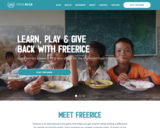
Students can practice matching words to the correct definition, and donate rice at the same time.
For each correct answer, the United Nations World Food Programme donates 10 grains of rice to a country in need. How’s that for combining word learning with social goodness? When a student plays, there is a visual display of rice (see image) which is added to a bowl each time the student makes a correct response.
Free Rice includes subject area lists in Geography, Science, Math, and others. It is leveled so students can play at just the right level of challenge for them.
If you have an error message just copy and paste this url into your browser: https://freerice.com/categories
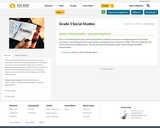
This is a unit planning frame that could be used to help in creating the road map for teaching the grade 3 social studies curriculum. It was developed in order to give students a background and a framework in FNMI. The unit is divided the unit into Pre-Newcomers and Newcomers. This way the students will develop a better understanding of the FNMI understandings.

Have you ever wondered what it would be like to live in an igloo?It would be pretty cold compared to the houses we live in now. Could you imagine living with over forty other people in one big house? Living with that many people would be like sharing a house with your whole class and all the teachers in your school!
The environment that we live in affects everything that we do. Canada is a country with a lot of different environments. There are parts of Canada where the temperature is freezing and all you can see is snow for most of the year. There are places where it rains a lot of the time and places where it is very dry. There are places that have mountains and some that are flat. There are rivers, lakes and oceans. Canada has a very diverse landscape.
In the past, First Nations were the only people living in Canada.They are the First Nations because they were the first occupants of North America. In Canada, each First Nation had to adapt to their environment in different ways. The houses they built, the food they ate, and the activities they did were all greatly affected by the environment they lived in.
Here you can look at three different aboriginal cultures from three different parts of Canada: the Huron, the Haida, and the Inuit. You can compare them to see how different their ways of life were because of where they lived.
Teaching resources available.

In honour of Truth and Reconciliation Week, the Canadian Olympic School Program is proud to feature the stories of two distinct Indigenous Team Canada athletes, Jesse Cockney and Jillian Weir. Through their personal growth and achievements, they have brought Indigenous voices to the forefront.
Students will explore the themes of gratitude and inclusion, making links between their world, curriculum and stories.
Athlete Stories are available in two different reading levels, Kindergarten – Grade 3 and Grade 4- 6. Each story is accompanied by discussion questions and learning activities that teachers can easily integrate into their curriculum.

Indigenous games for children.

Indigenous people have long passed on knowledge from generation to generation through oral traditions, including storytelling. Storytelling teaches history, values, beliefs and ways of life.
Enjoy this series of oral stories told by Elder Hazel, where you'll hear all kinds of fascinating stories.
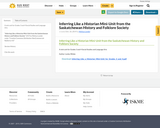
A mini unit for Grades 3 and 4 Social Studies and Language Arts

Videos, Podcasts, Quizzes!
Learn how anything works. It's all here from health, science, home/garden, auto, tech, money, lifestyle, enterainment, adventure, animals and more!

The Legacy of Hope Foundation is a very comprehensive site that offers lots of great resources that help to promote healing and Reconciliation in Canada. The Legacy of Hope Foundation's (LHF) goal is to educate and raise awareness about the history and existing intergenerational impacts of the Residential School System (RSS) and subsequent Sixties Scoop (SS) on Indigenous (First Nations, Inuit, and Métis) Survivors, their descendants, and their communities to promote healing and Reconciliation.Check out each of the sections to see the great resources they have to offer.

Our Mennonite History for Young People series of education materials tells the story of Mennonites who arrived in Manitoba from Russia in the 1870s and migrated to Mexico and Paraguay in the 1920s.
This series has been developed to be an excellent addition to existing social studies curricula in Canada for both public and private schools with Low German Mennonite students. The books can also serve as non-fiction readers for language classes.
The downloadable series includes:
Volume 1: Leaving Canada
Volume 2: Discovering Mexico
Volume 3: A New Home
Volume 4: Leaving Russia
There are also downloadable workbooks, worksheets and assignments to accompany it books in the series.
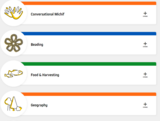
Métis culture will continue to be lived and celebrated when we pass our knowledge on to the generations who follow us.
Everyone is on a learning journey. While exploring historical and contemporary Métis ways of knowing and doing, these learning packages provide knowledge and understanding for students and teachers. Topics include: Traditional Harvesting Methods, Geographical Terms, Music and Dance, Conversational Michif, Beading, and Traditional Foods. The lesson plans and videos highlight Knowledge Keepers walking in the tall prairie grass, Elders preparing la galette (bannock), students learning Michif numbers, and family greeting each other for tea. We hope these resources will assist you in your learning.

Engaging lesson plans based on the Five Foundational Knowledge Themes. Educators have the opportunity to build their foundational knowledge while delivering Métis content through lessons that reflect promising practices.